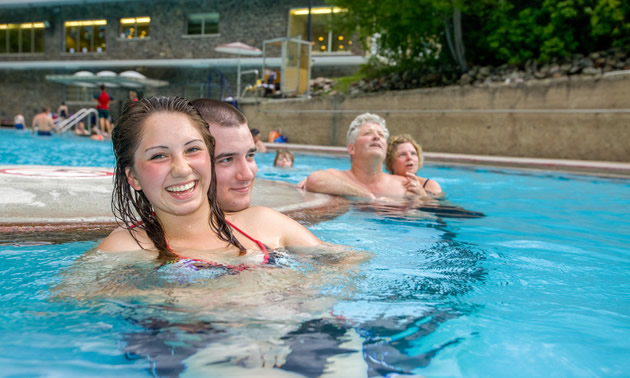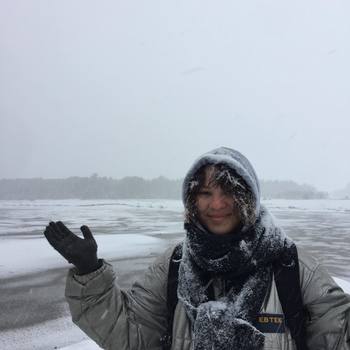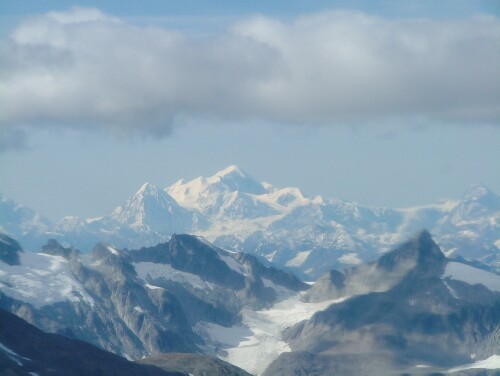Mostly national parks, naturally.
1. Glacier National Park, in southeastern British Columbia, in the Selkirk Mountains, west of State Highway 95. "Snow-capped peaks and glaciers; contains Nakimu Caves and Mt Bonney, 10, 194 feet high."
Around 600,000 visitors a year, though another 3.4 million pass through annually on the Trans-Canada Highway. The Canadian Pacific Railway passes through as well. All in all, this appears to be one of the jewels of Canada, though its great CPR hotel, Glacier House, was demolished in 1929. I am not sure why Mt. Bonney is singled out by the IWE as an especially notable site, as it is not one of the highlighted mountains or attractions in current literature concerning the park.
2. Kootenay National Park, in southeastern British Columbia, in the Canadian Rockies, on State Highway 1B. "Forests and deep canyons, including Marble Canyon."
There are seven contiguous National Parks in the Canadian Rockies, not, however, including Glacier above, though that is pretty close by. Kootenay connects with Banff in Alberta and Yoho (#4 below). Marble Canyon is still touted as a major attraction. It doesn't look like there are any hotels or notable restaurants inside the park.
3. Mount Revelstoke National Park, in southeastern British Columbia, in the Selkirk Mountains, on State Highway 1. "Large forest of virgin timber."
Adjacent to Glacier National Park (#1). There is a road on this mountain that goes pretty much all the way to the top (1835 meters, which translates to 6,020 feet. I know I am very backwards, but metric measurements mean nothing to me). There are a number of hiking trails.
4. Yoho National Park, in Eastern British Columbia, in the Canadian Rockies, on State Highway 1. "Waterfalls and lakes, including Emerald Lake; Mt. Gordon, 10,346 feet high."
Located right in between Glacier National Park to the west, Banff to the east, and Kootenay to the south, this looks to be yet another super park--how would any wage slave schmoe ever have enough time to visit all of them? (the answer, of course, is that such a person wouldn't have the time). Emerald Lakes is still touted as one of the highlights of the park. The nightlife doesn't look as exciting as it is in Banff, but there are bars in the adjoining village.
5. Mount Fairweather, in the northwest, on the boundary between British Columbia and Alaska. "The highest point in the province, 15,318 feet high. slopes covered with glaciers."
The estimated height of this mountain has grown seven feet since the 60s. It looks awesome but I am not sure there is much for the ordinary tourist to do here, if he can even realistically visit at all. This is not a mountain a regular person would be able to climb on his own, and while there is accessibility from the Alaska side via Glacier Bay National Park, the park's own website states that "these are among the least visited mountains of their elevation in North America. Many mountains in the range are unnamed and only limited information is available on most routes...Many climbs take as long as one month to accomplish." The only way to get there even from the inhabited part of Alaska is by charter boat or floatplane. 12 day guided climbs of Mt Fairweather start at $4,021, which I guess is not actually that bad, but this is clearly not a family destination. Global warming does not as yet appear to have had much visible effect on the local topography.
6. Water Route from Vancouver to Alaska, off the west coast of British Columbia. "One of the most beautiful boat trips in the world."
The Alaska Marine Highway runs a popular (in the summer) ferry service between Bellingham, Washington and Alaska, making a stop in Prince Rupert, British Columbia. It does not appear to stop in Vancouver, which, in contrast to its current popularity on the tourist circuit, did not otherwise merit any mention on this list. It's about a 36 hour ride, and it is not terribly expensive, I guess, especially if you are not hauling a car. It's around $250 a person, ($500 for a car), and an extra $300 if you want a cabin, though it sounds like people sent up tents on the deck. The dining is cafeteria-style. It's not a cruise ship. The Princess line does run cruises from Vancouver up the coast. The current listed fares actually look cheaper than this other boat, starting at $579 for two people for a five day round trip tour. But not being familiar with how cruise ships operate I am not accounting for extra fees, etc.








No comments:
Post a Comment